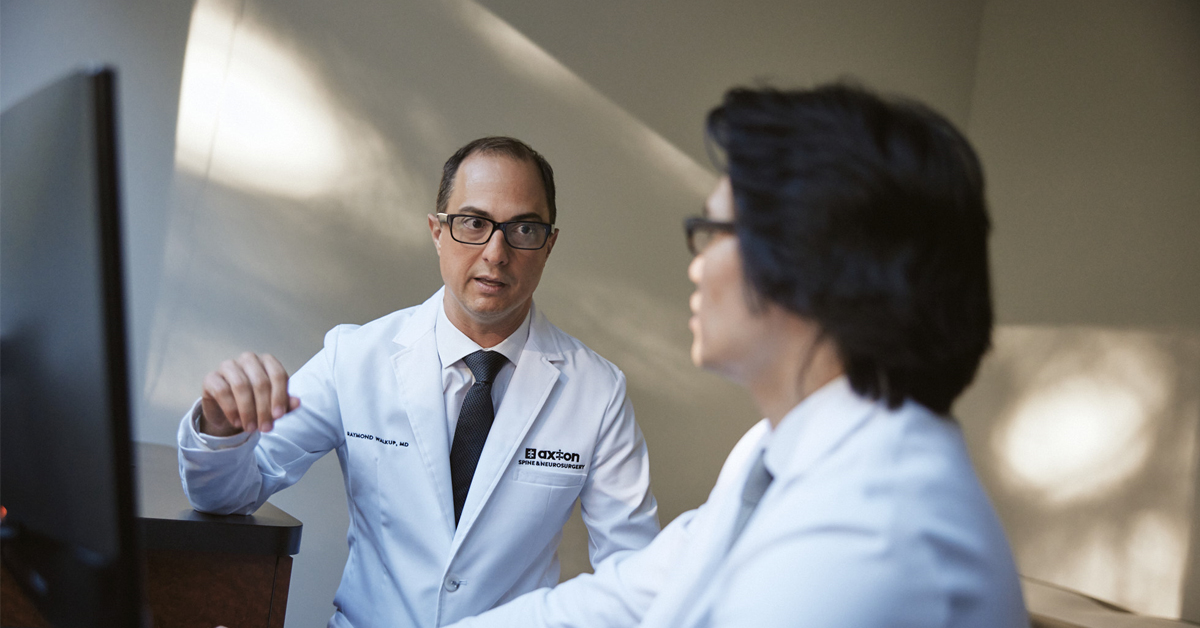Spinal Fusion Surgery: What You Should Know

What Is Spinal Fusion Surgery?
Spinal fusion surgery is a procedure that permanently joins two or more vertebrae in your spine, preventing motion between them.
During a spinal fusion surgery, your surgeon inserts bone or a bone-like substance between two spinal vertebrae. The bone graft or substitute stimulates bone growth between the adjacent vertebrae, replicating the natural repairing process of fractured bones. Metal plates, screws, and rods may be used to keep the vertebrae together until the bone heals and fuses into a single solid unit.
Who Needs Spinal Surgery?
Prior to considering surgery, your doctor may recommend physical therapy, at-home exercises, medication, or spinal injections. If these treatment options do not work, this surgery may be the best course of action. Your doctor may recommend spinal fusion to treat:
1. Spinal Deformities
Spinal fusion can help repair spinal abnormalities such as sideways curvature or scoliosis.
2. Instability or Weakening of the Spine
If there is uneven or excessive mobility between two or more vertebrae, your spine may become unstable. This is a common side effect of severe spine arthritis. In such circumstances, spinal fusion can be used to restore spinal stability.
3. Disk Herniation
After removing a damaged or herniated disk, spinal fusion may be done to stabilize the spine.
How Long Does Spinal Fusion Surgery Take?
The length of spinal fusion surgery depends on your specific situation, including the extent of repair and how many vertebrae are fused. Surgery length also varies by the type of disease that has affected your spine. Depending on your circumstances, surgery could take as little as three hours, or as long as seven.
The Surgical Procedure
The surgeon’s chosen technique for spinal fusion surgery depends on:
- The specific location of the bones being fused within the spine
- The underlying reason for the fusion
- Your overall health and body shape
Here is a high-level overview of the spinal fusion process:
1. Accessing the spine
Your surgeon creates an incision to access the spinal bones that will be fused. If approaching from the back, your surgeon will make the incision directly over the spine or on either side.
Alternatively, the incision can be made near the stomach or throat if your spine will be accessed from the front.
2. Preparing the bone graft
The bone graft, a vital fusion component, can originate from a bone bank or be harvested from your body. In some instances, synthetic materials may be utilized instead of bone grafts.
If your bone is being used for the fusion, it is commonly harvested from the pelvic area. To do this, your surgeon makes an incision near the pelvic bone, extracts a small portion, and then seals the incision.
3. The fusion process
The bone graft material is strategically placed between the spinal bones intended for fusion. To stabilize the area during the healing of the bone graft, your surgeon may use metal plates, screws, or rods.
What To Expect After Surgery
Following the surgery, a two to three-day hospital stay is commonly required. Depending on the location and extent of your surgery, you may suffer some pain and discomfort, but the pain is usually effectively controlled with medication.
During recovery, some people wear a brace that restricts their movement. In addition to wearing a brace, physical therapy can teach you how to move, sit, stand, and walk so your spine remains properly positioned.
With proper post-surgery care, the vertebrae should grow into a single bone within three to six months, rendering the spine immobile at the fusion point.
When Can I Travel After Spinal Fusion Surgery?
In the first six weeks after spinal fusion surgery, patients should avoid automobile rides longer than 20–30 minutes. Similarly, post-surgery air travel should be limited as much as possible.
These precautions are necessary to reduce the danger of deep venous thrombosis and pulmonary embolus, lessen back pain which may be exacerbated when sitting, and allow time for healing and physical therapy treatments.
After six weeks of recovery, long trips in a car should be broken up with regular stops to get out and move around for several minutes. Traveling with extra legroom and standing up every 20–30 minutes is also recommended.
Experience Relief From Spine Pain
If you’re currently experiencing back pain, know that you have options for relief. Our team of medical professionals near Altanta and Alpharetta is fully equipped to assist you in finding the right solution to manage your pain effectively and improve your overall quality of life.
Take the first step towards pain-free living and explore spinal fusion surgery. Schedule an appointment today!

